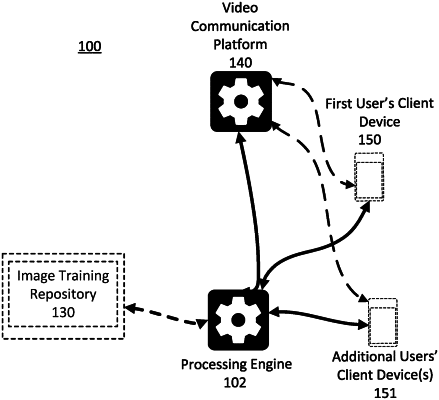| CPC G06T 3/4053 (2013.01) [G06T 3/4046 (2013.01); G06V 10/7715 (2022.01); G06T 2207/10016 (2013.01); G06T 2207/20016 (2013.01); G06T 2207/20081 (2013.01)] | 20 Claims |

|
1. A computer-implemented method comprising:
transmitting, by a first client device, a resolution parameter to a second client device, the resolution parameter indicating a first resolution;
receiving, by the first client device, one or more downscaled images from the second client device, the one or more downscaled images being at the first resolution;
determining which upscaling image process to use to upscale the received one or more downscaled images based on a selected image resolution output, wherein the determination of the upscaling image process is between a machine learning model that is trained using image pairs depicting a same image at different resolutions and a non-machine learning model based process;
selecting the upscaling image process that uses the machine learning model and generating a first set of upscaled images by:
inputting the received one or more downscaled images into the machine learning model; and
upscaling the received one or more downscaled images by the machine learning model, wherein upscaling comprises:
generating a first input sub-image of a respective input image, the first input sub-image corresponding to brightness information of the respective input image; and
generating a second input sub-image of the respective input image, the second input sub-image corresponding to color information of the respective input image; and
outputting by the machine learning model, one or more images based on the selected image resolution output, the one or more images being at a second resolution that is at a resolution higher than the first resolution; and
displaying, via a user interface of the first client device, the generated first set of upscaled images.
|